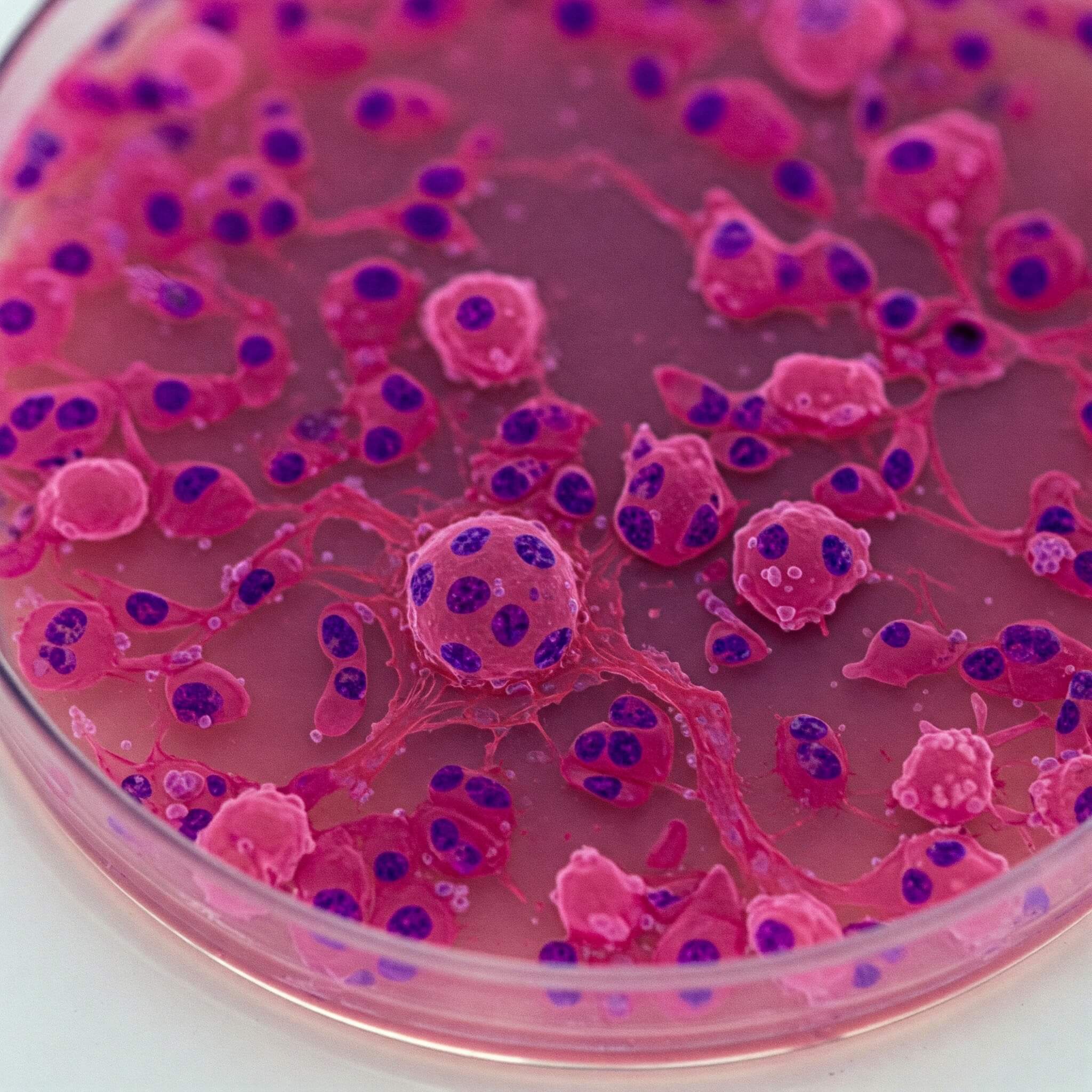Describe the benefits to using tissue cultures to study medications used for treating cancer cells.
Cancer. It’s a word that stops you in your tracks. For millions of people around the world, it’s not just a word—it’s a battle. Scientists and doctors are working day and night to find better ways to fight this disease, and one of the most exciting tools they’re using is tissue cultures. describe the benefits to using tissue cultures to study medications used for treating cancer cells, we're discussing a process that's revolutionizing the game. It's allowing us to learn about cancer, try out new medications, and even save lives—all from a small dish of cells in a laboratory. In this article, I'm going to take you on a journey deep into why tissue cultures are so amazing, how they work, and why they're so important in the battle against cancer. Let's begin.
What Are Tissue Cultures Anyway?
First things first—what are tissue cultures? Imagine this: a scientist takes a tiny sample of cells, such as cancer cells, and places them in a special dish describe the benefits to using tissue cultures to study medications used for treating cancer cells. They add some nutrients, they maintain the right temperature, and they allow those cells to grow. That's a tissue culture in a nutshell. It's a tiny garden of cells, but instead of flowers, you're cultivating something that can teach us how to defeat cancer. When we outline the advantages to using tissue cultures to study medications used for the treatment of cancer cells, it all begins with this simple setup.
Why is this so awesome? Well, cancer isn't straightforward. It's not one disease—it's hundreds of different diseases, each with its own character. Some cancers grow quickly, some spread fast, and some evade treatments. By culturing cancer cells in a laboratory, scientists can observe them closely without having to experiment on people or animals first. It's a safer, wiser way to learn. describe the benefits to using tissue cultures to study medications used for treating cancer cells. using tissue cultures—it provides us with a glimpse into cancer that we wouldn't otherwise have.
H2: Zooming In: How Tissue Cultures Help Us Understand Cancer
Cancer cells are like troublemakers. They don't play by the rules that other cells do describe the benefits to using tissue cultures to study medications used for treating cancer cells.. They grow like wild, spread to other areas of the body, and tend to laugh in the face of medicines like chemotherapy. That's why they're so hard to defeat. But when we talk about the advantages of applying tissue cultures to research medications used to treat cancer cells, one of the greatest advantages is the amount of control they provide.
In a laboratory, everything is controllable. describe the benefits to using tissue cultures to study medications used for treating cancer cells. to cultivate—perhaps breast cancer cells, lung cancer cells, or even a rare one that's difficult to obtain. They can manipulate the environment, such as altering the level of oxygen or introducing certain nutrients. Then, they can just sit back and observe what occurs. For example, if they need to find out why some cancer cells can withstand a drug, they can include that drug in the tissue culture and observe the reaction of the cells. Do they decrease in size? Do they counterattack? This interactive method is one gigantic reason describe the benefits to using tissue cultures to study medications used for treating cancer cells. .
Let’s take an example. Imagine a researcher studying pancreatic cancer, which is notoriously hard to treat. They grow pancreatic cancer cells in a tissue culture and test a new drug. Within a few days, they notice the cells start dying off. Describe the benefits to using tissue cultures to study medications used for treating cancer cells, that’s a clue! They can dig deeper—maybe tweak the drug or try it with another treatment. Without tissue cultures, this kind of experiment would take months or years. With them, it’s fast and focused.
And here's another clever trick: tissue cultures allow us to research unusual cancers. Certain cancers affect very few people, so it's hard to find patients to research. But with tissue cultures, researchers can take a little piece from one patient, culturize it in the lab, and have cells in enough quantity to perform hundreds of tests. Describe the benefits to using tissue cultures to study medications used for treating cancer cells , This creates new avenues for drugs that might otherwise have been overlooked.
H2: Accelerating the Search for Cancer Drugs
Discovering a new cancer drug is finding a needle in a haystack. It may take 10 or 15 years from initial conception to a pill that someone can take. Why so long? Because each drug must be tested and retested to ensure it's safe and effective. That's where tissue cultures come into play. When we're talking about the advantages to utilizing tissue cultures in studying drugs used for cancer cell treatment, one of the highest priorities is how fast they are.
Consider how it happens. Describe the benefits to using tissue cultures to study medications used for treating cancer cells. A scientist has a thought for a new medication. Rather than waiting months to try it out on animals or years to have it ready for human trials, they take a tissue culture of cancer cells and add the drug. In days—occasionally even hours—they can tell if it's killing the cancer cells or not. If it fails, they discard it and start over. If it shows promise, they're well ahead of where they'd be with the next phase. This rapid turnaround is a huge thing when we talk about the advantages of using tissue cultures to research drugs employed in treating cancer cells.
And besides, tissue cultures allow you to test a whole bunch of things all at once. Imagine a lab filled with dozens of plates, each one with cancer cells being given a different medicine or combination of medicines. It's like a giant science marathon—there are lots of experiments going on side by side. This fast-speed testing allows scientists to sort through more ideas in no time, discovering the winners and discarding the losers. That's why tissue cultures are a time-saver when it comes to cancer research.
Suppose a team is developing a drug against brain cancer. They might spend years testing it the old-fashioned way, but using tissue cultures, they might know within weeks whether it's worth developing. That's not only efficient—it's hope for patients who can't wait.
H3: Keeping Things Safe and Ethical
Testing medications isn't all rainbows and sunshine. When you test a new drug on animals or humans, there is a risk involved. Animals may be harmed, and humans who are tested early on may experience side effects we didn't anticipate. Tissue cultures eliminate some of that risk. When we explain the advantages of using tissue cultures to test medications used for treating cancer cells, safety is a large part of the equation.
By beginning with cells in a test tube, researchers can catch problems early. Does the medication kill cancer cells but damage healthy ones? Does it create strange reactions? They can determine that without it ever getting close to a living organism. This makes the entire process safer, and it is a major point when we speak of the advantages of using tissue cultures for testing medicines used to treat cancer cells.
Then there's the moral aspect. Many people aren't at ease with animal testing—it's a sensitive issue. Tissue cultures don't totally eliminate animals, but they reduce the number required. If a drug doesn't work in a tissue culture, it doesn't have to be tested further on mice or rats. That's a victory for compassion in science. And for humans, it's a safety net as well—fewer dangerous drugs get to clinical trials because tissue cultures screen out the duds first.
Suppose a scientist is testing a new leukemia medication. He tries it on a tissue culture and finds it's toxic to more than cancer cells. That's a warning sign—he can adjust it or abandon it without harming anyone. It's a pragmatic, humane method.
H2: Tissue Culture: Personalizing Cancer Treatment
Here's something surprising: two individuals with the same kind of cancer may require completely different treatments. Cancer is individual—it behaves in a unique way in each body. That's why personalized medicine is a popular topic, and tissue cultures are at the center of it all. When we discuss the advantages of employing tissue cultures to research drugs employed for treating cancer cells, personalization is a clear benefit.
How does it work? Physicians can remove a small sample of a patient's tumor, culture it in a tissue culture, and test drugs on it. They can observe which drug works best for that individual's particular cancer cells. It's like having a tailor-made treatment plan. This is already being done in some instances, and it's a tremendous reason to explain the advantages to using tissue cultures to test medications used for treating cancer cells.
Consider Jane, for instance. She's got lung cancer, but the usual chemo isn't effective. Her physician cultures her cancer cells in the lab, screens some drugs, and discovers one that kills them. Jane receives a treatment customized just for her, and it improves her chances. That's the strength of tissue cultures—customizing medicine to the patient, not vice versa.
It's a tool against drug resistance as well. Certain medicines make cancers get clever and lose their response to medicines as time passes. Physicians can check a patient's cells periodically with tissue cultures and change drugs when resistance occurs. It's a matter of being ahead of the game.
H3: Saving Cash in Cancer Research
Let's get real for a minute. Money is an issue. describe the benefits to using tissue cultures to study medications used for treating cancer cells. Cancer research isn't cheap—think millions or even billions of dollars. Clinical trials, animals to care for, lab equipment—it all contributes to the cost. Tissue cultures, however? They are an inexpensive alternative. When we characterize the advantages of using tissue cultures to test drugs used to treat cancer cells, saving money is a major factor.
Raising cells in a petri dish doesn't require the same inputs as conducting a large animal study. No cages, no special diet, no enormous personnel. It's easier and less expensive. And because tissue cultures can rapidly indicate whether a drug is a loser, scientists don't throw money down dead ends. That money can be spent on the drugs that do have a chance, describe the benefits to using tissue cultures to study medications used for treating cancer cells. which is a good thing when we outline the advantages of using tissue cultures to test drugs used in the treatment of cancer cells.
Imagine a small lab with limited funds. They can't have fancy trials, but they can have tissue cultures that they can grow and test hundreds of drug concepts. Maybe one of those concepts will become the next great thing—all because they didn't spend an arm and a leg to make it happen.
H2: Making Lab Results More Real
One of the things that people tend to wonder about is, "Does lab stuff really work in real life?" It's a valid question—cancer in a dish is not cancer in a human being. But tissue cultures are becoming increasingly capable of closing that gap. describe the benefits to using tissue cultures to study medications used for treating cancer cells. When we explain the advantages of employing tissue cultures to examine drugs employed for the treatment of cancer cells, it's good to discuss how far they have come.
These days, scientists can make 3D tissue cultures that act more like real tumors. They’ve got layers, blood vessels, and even some of the chaos you’d see in a body. This makes the results more reliable. A drug that works on a 3D culture is more likely to work on a patient too. It's not an ideal match, but it's a heck of a lot closer than describe the benefits to using tissue cultures to study medications used for treating cancer cells. flat cells in a dish, and that's why we talk about the advantages to working with tissue cultures to investigate drugs used to treat cancer cells.
For instance, a group researching colon cancer may employ a 3D culture to try out a new drug combination. If it reduces the mini-tumor, they've got good evidence it could reduce the actual thing. It's a bridge that makes lab work more significant.
H3: Teamwork Makes the Dream Work
Cancer studies isn't an individual describe the benefits to using tissue cultures to study medications used for treating cancer cells. sport—it's a group activity. Tissue cultures facilitate that group work. Describing the advantages of employing tissue cultures to research drugs administered for cancer cell treatment, cooperation is a subtle but fantastic benefit. Lab-grown cells can be transported to scientists around the globe. One group cultivates them, another receives drugs for testing, and a third does the math.
This sharing accelerates. And tissue cultures are reliable—if two laboratories employ the same stock of cells, their findings fall into place better. That reliability enables everybody to build upon one another's efforts.describe the benefits to using tissue cultures to study medications used for treating cancer cells It's a relay race where all the runners are coordinated, heading to the same target.
Picture a lab in Japan cultivating breast cancer cells and shipping them to a group in the U.S. The U.S. team tests a medication, discovers it works, and reports the data back. Both have made a breakthrough that they could not have achieved individually.
H2: The Future Is Bright with Tissue Cultures
Where are tissue cultures going? Anything is possible. As technology improves, so do the applications of using them. When we speak of the advantages of using tissue cultures to investigate drugs used for the treatment of cancer cells, the future plays a large role in the narrative. Scientists already are combining tissue cultures with artificial intelligence to anticipate which drugs will work. Describe the benefits to using tissue cultures to study medications used for treating cancer cells. They're employing gene editing to make modifications to cancer cells and observe how changes influence treatment.
In the future, we may have tissue cultures as a regular aspect of cancer treatment. Each patient would have his or describe the benefits to using tissue cultures to study medications used for treating cancer cells ,her cells analyzed in a laboratory, and physicians would craft a treatment plan specifically for each one of them. It's an aspiration that draws nearer each day, and it's an exhilarating reason to explain how good it is to examine drugs utilized in the treatment of cancer cells using tissue cultures.
Consider a child diagnosed with leukemia in 2030. Their physician cultures their cancer cells, performs tests, anddescribe the benefits to using tissue cultures to study medications used for treating cancer cells.. That's the future tissue cultures could provide.
Wrapping It All Up
Cancer's a monster, no question. But we're not powerless—we've got tools such as tissue cultures on our side. describe the benefits to using tissue cultures to study medications used for treating cancer cells.They're quick, safe, inexpensive, and intimate. They allow us to take a glimpse at cancer's universe, screen drugs like never before, and offer hope to patients. When we explain the advantages of applying tissue cultures to examine medications used for treating cancer cells, it's obvious they're a superstar in this battle.
The next time you read or hear of a cancer breakthrough, consider the tissue cultures that may have made it possible.describe the benefits to using tissue cultures to study medications used for treating cancer cells. They're tiny, unheralded heroes of the laboratory working tirelessly to save lives. And as science continues to advance, they'll become even better at assisting us to win this fight—one cell at a time.





